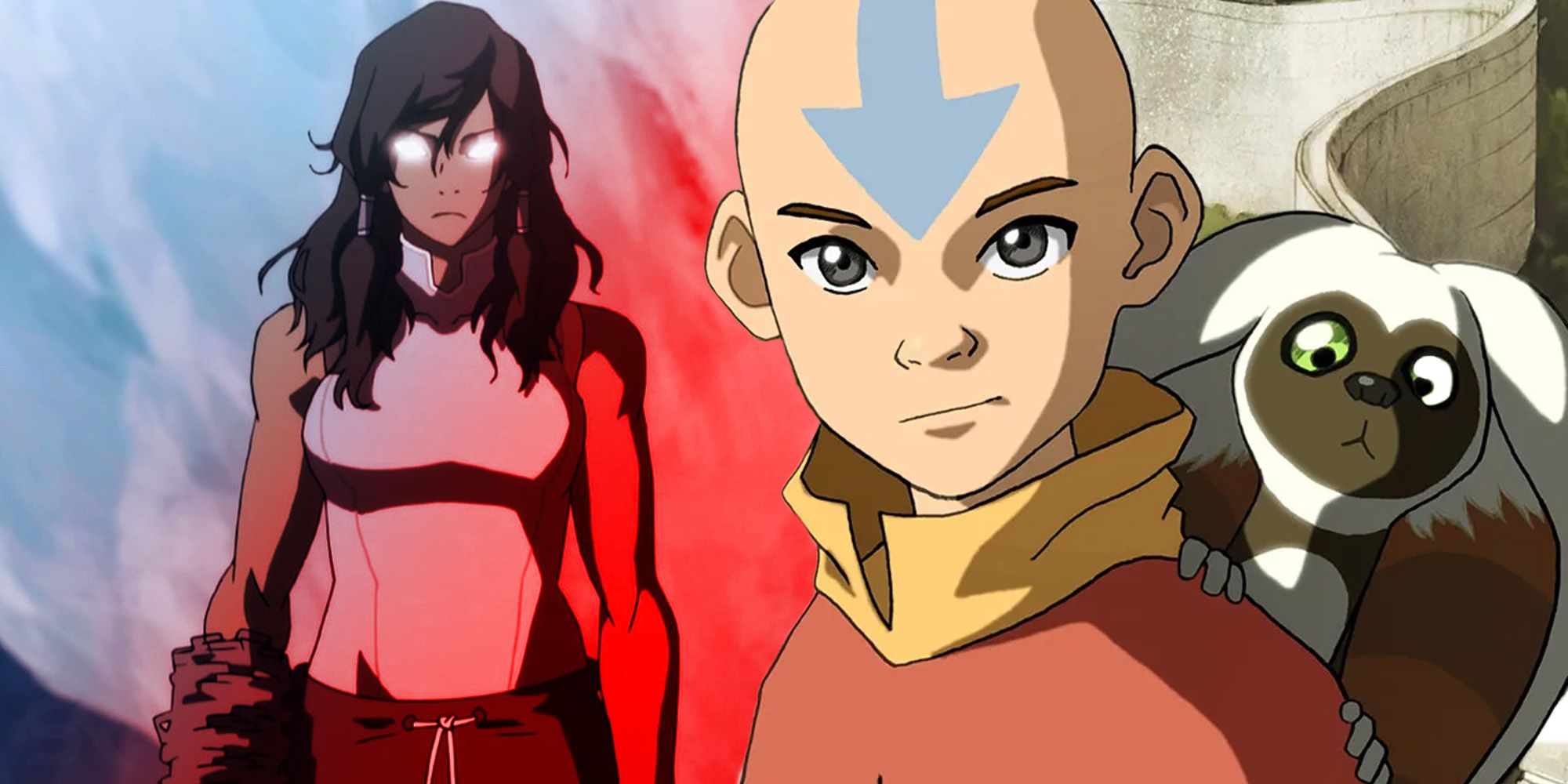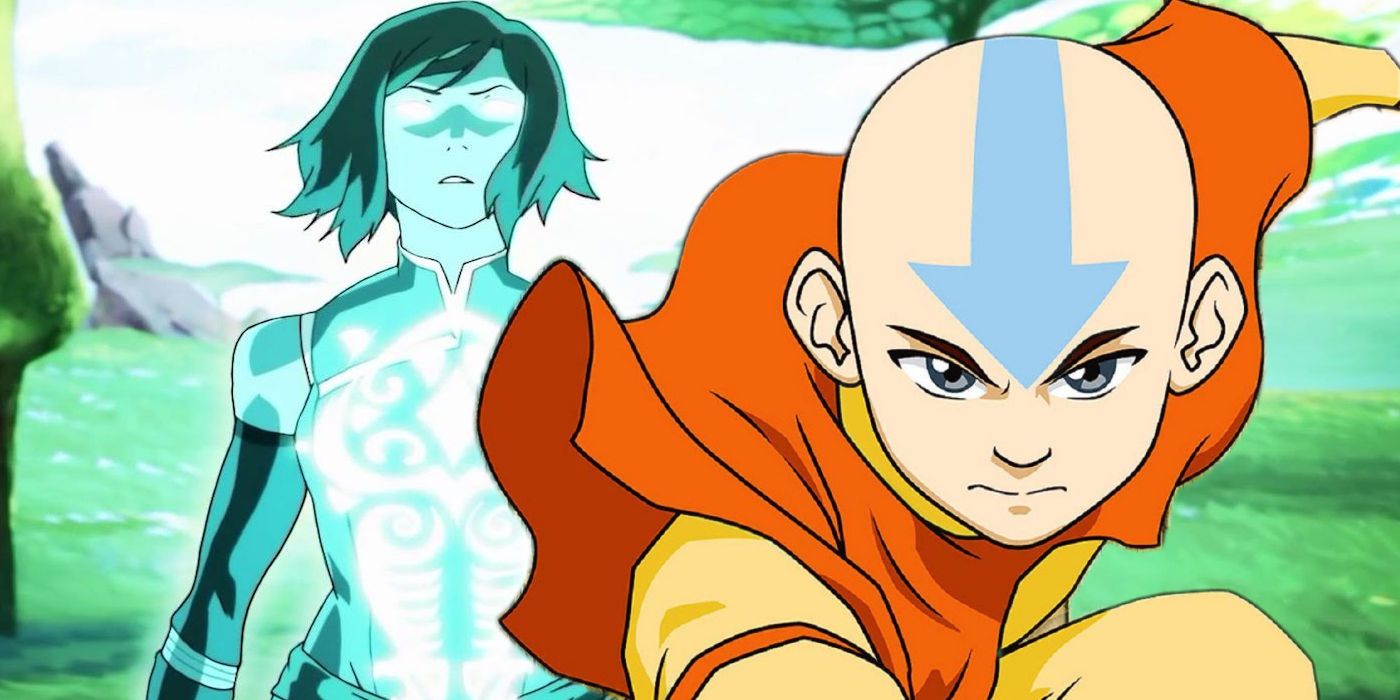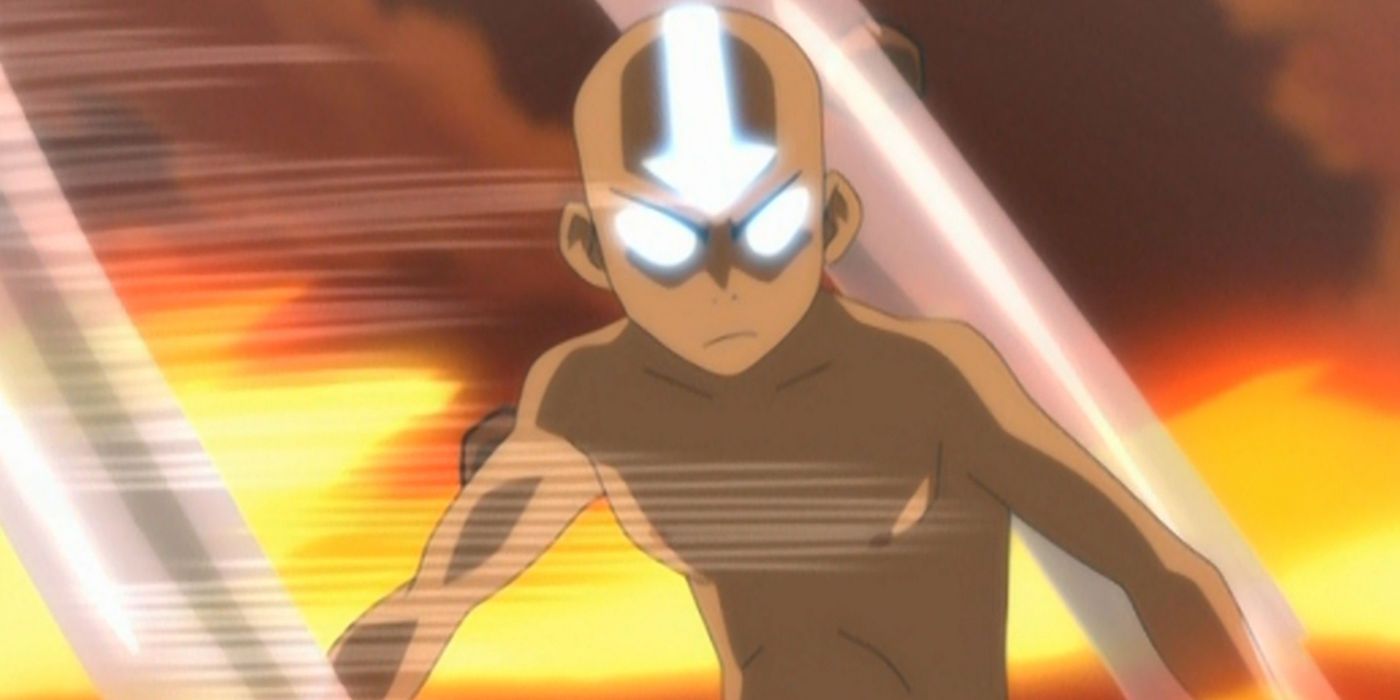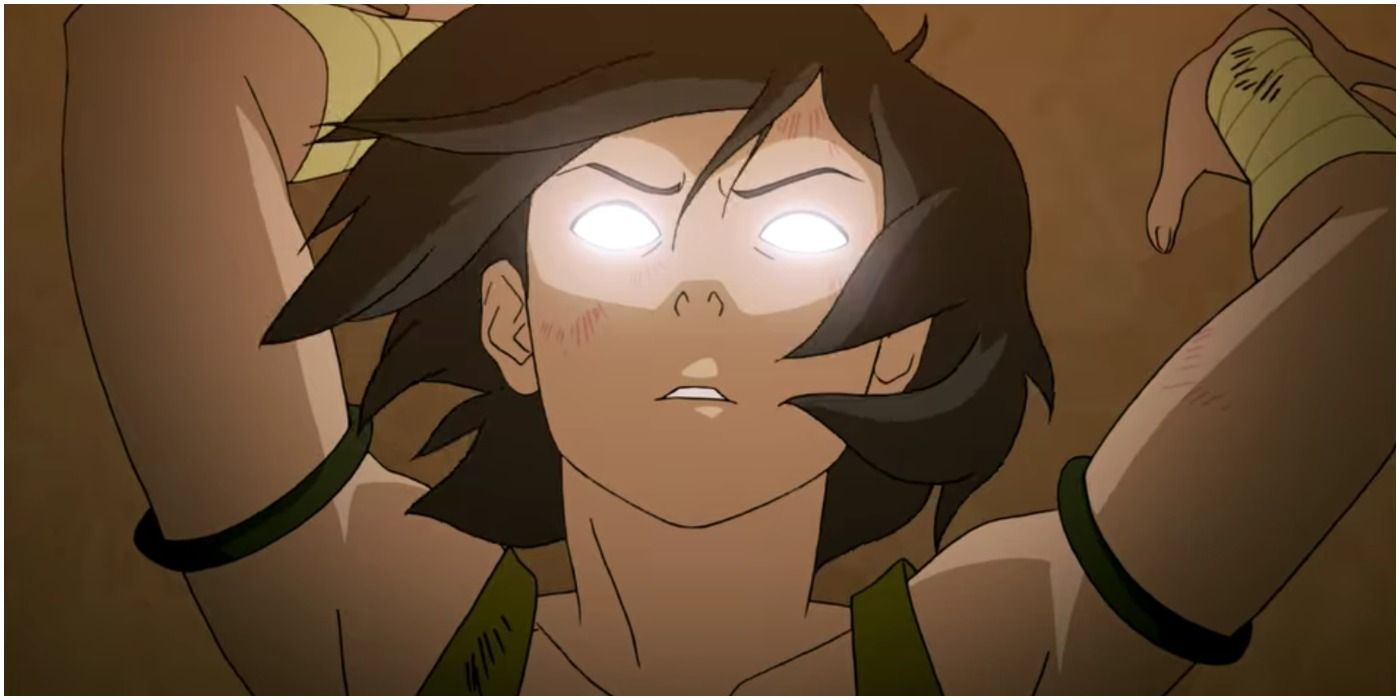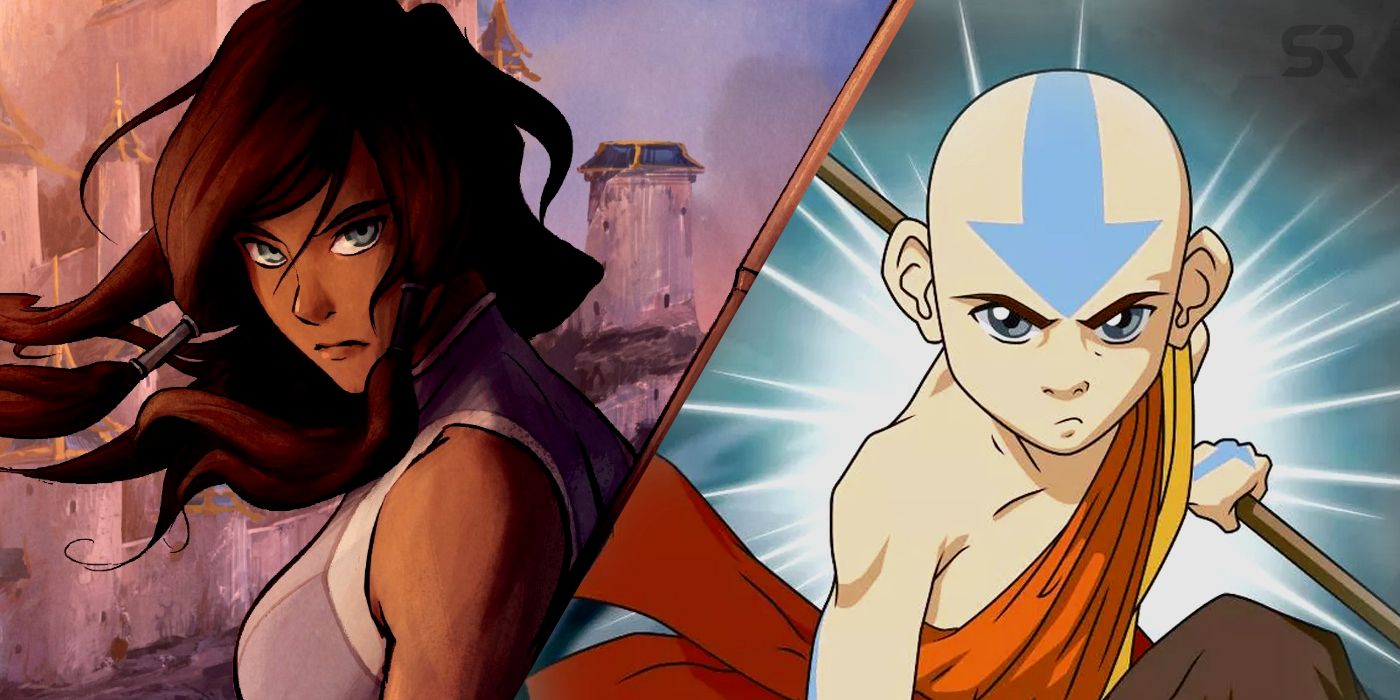Avatar: The Last Airbender and The Legend of Korra present two different versions of the Avatar in Aang and Korra, each with the same base skillset and highly different ways of using it - but just how powerful are the two and how do their powers differ? Both Avatars were incredibly skilled, although their powers were used in varying ways.
In The Last Airbender, viewers meet Aang, a 12 year-old Avatar and the only airbender left in the world. He had to master the other three elements and defeat the tyrannical Fire Lord Ozai before he can conquer the other nations. The Legend of Korra introduced Aang's successor, Korra, a 17-year-old from the Southern Water Tribe. Like all Avatars before her, she had to maintain balance in a world beset by varying threats.
Now that both Avatar: The Last Airbender series have resurged in popularity, it's become a common habit among fans of the franchise to debate which of these two Avatars is more powerful, and why. The truth is, both Aang and Korra are powerful in different ways, and the time periods during which they were the Avatar demanded different things from them in terms of their abilities. Instead of pitting the two against each other, it may be more productive to examine the potentials and limits of the Avatar's power, and why they manifested themselves differently in Aang and Korra. Here is an examination of just how strong the Avatar can be, as well as how Aang and Korra exhibited that fact.
The Avatar's Powers & Limits Explained
First and foremost, the Avatar is the only person able to bend water, earth, fire, and air. They are meant to use this power to keep the world in balance, and to bridge the gap between the physical world and the Spirit World. The first-ever Avatar, Avatar Wan, gained the ability to bend all four elements by fusing with the light spirit Raava. All Avatars must train to master the four elements, and they are either bolstered or limited by this training, depending on their talent and dedication to learning the bending arts. However, even if the Avatar hasn't completed their bending training, they are still immensely powerful in the Avatar State. In the Avatar State, the Avatar channels the knowledge of all past Avatars, combining all their strengths. The state can be entered at will if the Avatar has sufficient control, but it can also be a reflexive defense mechanism or a reaction to intense emotion.
The Avatar State is a powerful ability, but it is not without its limits. If the Avatar is experiencing a spiritual block, they cannot enter the Avatar State. When the Avatar is in the Avatar State, they are also at their most vulnerable: if they are killed while in the Avatar State, the reincarnation cycle ends. The same happens if Raava is destroyed. Aang very nearly was killed in the Avatar State after Azula shot him with lightning at the end of season 2. The cycle continued thanks to Katara healing Aang with water from the Northern Water Tribe's spirit oasis. The Avatar Cycle actually broke with Korra, when Unalaq and Vaatu destroyed Raava. However, the cycle began anew when Jinora restored the light spirit.
How Powerful Aang Was
Aang was an incredibly powerful airbender and Avatar. He demonstrated a clear proficiency in airbending at a young age, becoming the youngest airbender to become a master until Jinora, many years later. With airbending alone, he took down several Fire Nation ships during their siege on the Northern Water Tribe. He took to waterbending fairly easily and managed to learn earthbending and firebending in a short period of time under an immense amount of pressure. He held his own against Ozai during their final fight for quite some time without the Avatar State, a feat made all the more impressive by the fact that Ozai was powered up by Sozin's Comet. In the end, Aang needed the Avatar State to finish his fight with Ozai, which amplified his power many times over. With the Avatar State, Aang was easily able to overcome Ozai. He also used the Avatar State to wipe out the Fire Nation navy in the siege on the Northern Water Tribe and take down much of the Dai Li during the season 2 finale.
Equally impressive to these feats was Aang's spirituality and mental fortitude: he could enter the Spirit World at will through meditation and had a clear grasp on his role as the bridge between two worlds. He conquered the Avatar State's tendency to overtake his consciousness: when his past lives moved to kill Ozai, Aang took control and turned the killing blow aside, demonstrating full mastery of the Avatar State. Aang was also the first Avatar to use energybending. He learned the technique from a Lion Turtle and used it to take away Ozai's bending. To do this, the bender's spirit must be completely incorruptible, meaning that Aang's spiritual strength aided him just as much as his physical strength in his final fight.
How Powerful Korra Was
Like Aang, Korra was a very powerful Avatar. She was a great fighter and exhibited talent for bending water, earth, and fire when she was only four years old. It took her a while to pick up airbending and enter the Avatar State, but she mastered both once she understood the spirituality involved. Even without the Avatar State in season 1, Korra was a force to be reckoned with. She generated massive waterspouts, tore up city streets, and defeated master firebenders with ease. Korra was also the first Avatar to learn how to spiritbend and metalbend. She learned the former from her uncle Unalaq and used it to subdue malevolent spirits and destroy Vaatu. Suyin Beifong taught her to metalbend, and she mastered it fairly quickly thanks to her impressive physicality and understanding of the bending arts. She also learned how to energybend from Aang's spirit and used this power to restore others' bending.
One of the biggest complaints about Korra is that she didn't understand the spiritual side of bending as well as Aang, but as her journey progresses it becomes clear that Korra's spirit is powerful in its own right. When she lost Raava at the end of season 2, Korra projected her own spirit to Republic City to defeat Unalaq, who had fused with Vaatu to become a dark Avatar. In the finale of season 3, she fought Zaheer while simultaneously battling poison. Even in her weakened condition, she used the Avatar State to go after Zaheer in a battle reminiscent of Aang's own struggle against Ozai. In theory, this Avatar State should have been a diluted form of Aang's, seeing as Korra's connection to the past Avatars had been severed. However, she still managed to reach staggering levels of power, all while relying on her own strength and connection to Raava. The last episode of the entire series saw her do something no Avatar had done before: bend pure spiritual energy. Korra bent the rays from Kuvira's spirit weapon, controlling what was essentially the Avatar universe's nuclear bomb. For reference, the weapon had razed towns and destroyed Republic City before Korra destroyed it. In doing this, she created a new spirit portal, meaning that her bending was powerful enough to neutralize the world's most dangerous weapon and tear into another world. This moment was an entirely new showcase of what the Avatar could do. As Zaheer told Korra in season 4, "You think your power has limits. I say it's limitless."
Why Aang & Korra's Powers Were Different
Despite having the same basic set of powers, Aang and Korra's powers differed in part because of their temperaments. Aang's airbender upbringing meant that he was more of a pacifist and that he focused on spirituality. His powers - especially his airbending and meditative skills - are a result of that. Korra excelled at the physical side of bending from the start, and her love for this physicality prompted her to face fights head-on.
However, their powers were also different on account of their individual circumstances and the time periods during which they were the Avatar. For example, Aang's Avatar State was stronger than Korra's was after Raava's destruction, as he could count on his connection to all the past Avatars. Even though Korra did not have that power, she relied on her own strength and connection to the resurrected Raava, and she ended up accomplishing incredible things like bending pure spirit energy. Korra also mastered more unique abilities than Aang, like metalbending and spiritbending. Metalbending was a relatively new discipline during Aang's time as the Avatar, meaning that he didn't focus on learning it. Since it became such a common bending style by the time Korra was born, it makes sense that she learned it. The same goes for spiritbending, as it wasn't developed while Aang was an Avatar. He was still powerful without those techniques, but Korra's skill set made her more versatile in a fight.
One of the biggest messages of both The Last Airbender and The Legend of Korra is that as the world changes, the Avatar also needs to change. At the heart of it, that's why these two great Avatars' powers were different: because Korra's world was different from Aang's world, and it needed a new Avatar. Aang and Korra both pushed the boundaries of just how powerful the Avatar could be and laid the ground for their successors, who in turn could rise to new heights.

